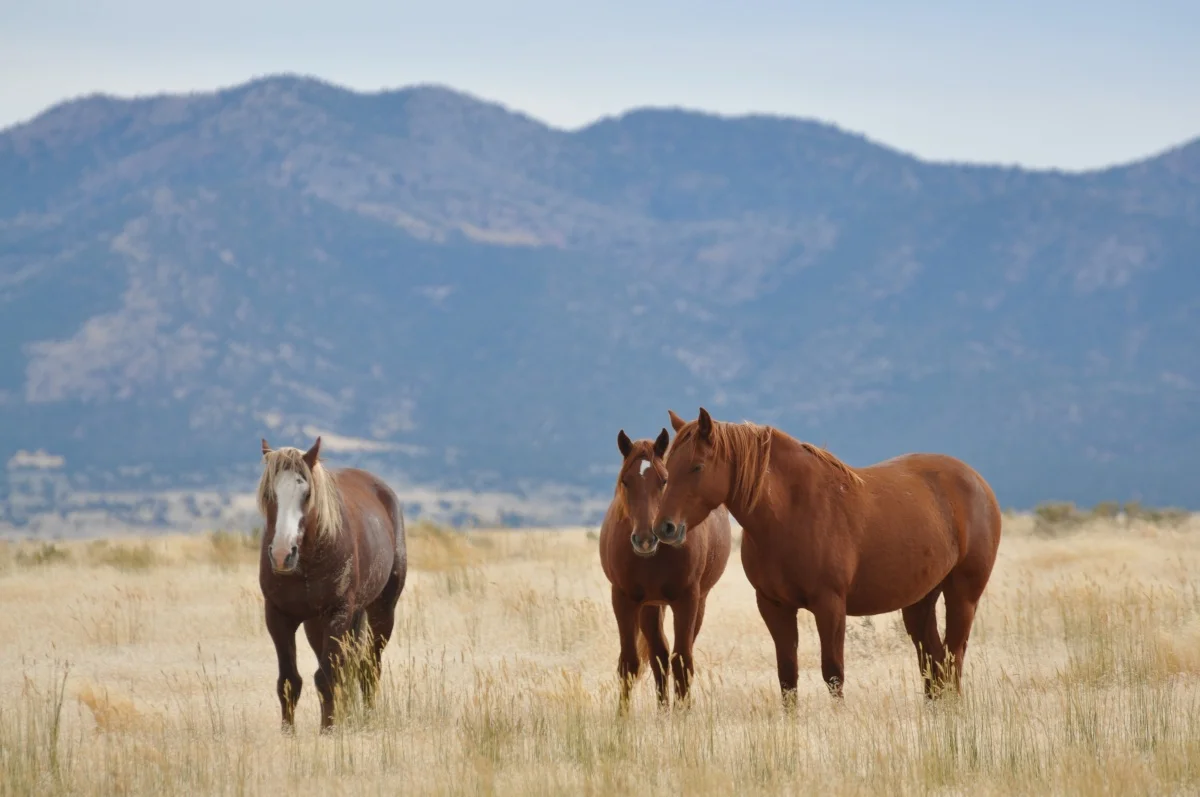by: Lexy Gross
Thousands of the west’s wild mares could soon have their ovaries removed under the funding and supervision of the U.S. Department of the Interior.
Congress recently passed the Interior Appropriations bill, a major piece of legislation that funds some of the government’s most well-known agencies – the National Parks Service, the Environmental Protection Agency, the Bureau of Reclamation and many others.[i] An amendment to the bill allows the Interior’s Bureau of Land Management (BLM) to support the removal of the ovaries of wild horses in America’s plains.[ii] In the year prior, Congressman Chris Stewart proposed to exterminate part of the population, but the amendment never made it into the budget bill.[iii] However, his $15 million amendment supporting sterilization passed unanimously and was unopposed on the House floor.[iv] In early August, the bill passed the Senate with little resistance.
The management of wild horses has long been a problem and source of contention on public lands in the west. The Wild Free-Roaming Horses and Burros Act of 1971 requires the BLM to estimate the number of roaming horses and burros, and predict how many can reasonably live on the land with available resources.[v] This number is called the “Appropriate Management Level,” or ALM.[vi] Currently, the ALM is 26,690, but the estimated 2018 on-range wild population is 81,951.[vii] This is a 13 percent increase from 2017.[viii]
The committee report requests that BLM plan to “(1) remove the animals from the range; (2) increase the use of sterilization; (3) increase the use of short-term fertility control; (4) provide an adoption incentive of $1,000 per animal; and either (a) allow animals older than 10 years of age be euthanized humanely or (b) prohibit the use of euthanasia on healthy wild horses and burros.”[ix]
With inflamed passions on both sides of the debate, BLM has taken a piecemeal and varying approach over the last few decades. A 2017 National Geographic article describes the process BLM uses to remove horses from plains and perform fertility control. Helicopters have traditionally been used to round up the horses before they are trucked away to holding facilities, where fertility control in some fashion is performed or BLM otherwise decides how to handle them.[x]
There are other ways to perform population control, as the National Geographic article points out. Wild horse advocates, researchers and conservationists have proposed the federal government try another kind of fertility control that does not require the sterilization of the animals.[xi] Porcine Zona Pellucida (PZP) is a reversible form of fertility control that is used internationally on dozens of species and has been proven effective for population control when given to mares.[xii] This vaccine has been used to control the wild horse population at Assateague Island National Seashore, where for 33 years the National Parks Service has been administering the vaccine.[xiii]
Because PZP requires several injections for it to be effective, it requires a lot of time, documentation and helping hands.[xiv] However, the roundup and complete sterilization of mares is not comparatively an obviously effective method either. And PZP is not perfect by any means – it still requires the horses to somehow receive injections and many animal-rights activists are not impressed by some allegedly negative long-term effects.
As Joanna Grossman, equine protection manager at the Animal Welfare Institute explained, there are dozens of considerations it does not appear members of the House took into account when approving this $15 million amendment.[xv] With humane equine sterilization procedures come continuing veterinary costs, potential complications, and overhead costs.[xvi] In addition, unlike other methods of fertility control, this method is extremely permanent, forever impacting the makeup of the wild horse population.
In summary, without more research and transparency into the impact sterilization will have on America’s wild horse population, this “quick and dirty” method of reaching a numbers goal should be avoided. The committee report seemed to have in mind an array of methods, some which have been proven advantageous, which begs the question of the need for such an extreme and costly procedure.
[i] Nicole Goodkind, Republican Bill Allows for Surgically Removing Wild Horses’ Ovaries to Cull Population, Newsweek (July 23, 2:12 PM), https://www.newsweek.com/department-interior-wild-horses-appropriations-zinke-sterilization-1037870; Joanna Grossman, Interior Department Should Not Remove the Ovaries of Wild Horses, The Hill (July 20, 2018), http://thehill.com/opinion/energy-environment/398021-interior-department-should-not-remove-the-ovaries-of-wild-horses.
[ii] Id.
[iii] Id.
[iv] Id.
[v] U.S. Dep’t of the Interior, Wild Horse and Burro On-Range Population Estimates, https://www.blm.gov/programs/wild-horse-and-burro/about/data/population-estimates (last visited Aug. 8, 2018).
[vi] Id.
[vii] Id.
[viii] Id.
[ix] H. Rep. No. 115-765, at 7 (2018).
[x] Ben Masters, Can Fertility Control Keep Wild Horse Herds in Check?, National Geographic (Feb. 8, 2017), https://www.nationalgeographic.com/adventure/features/environment/wild-horses-part-three/.
[xi] Id.
[xii] Id.
[xiii] Id.
[xiv] Id.
[xv] See Grossman, supra note 1
[xvi] Id.


